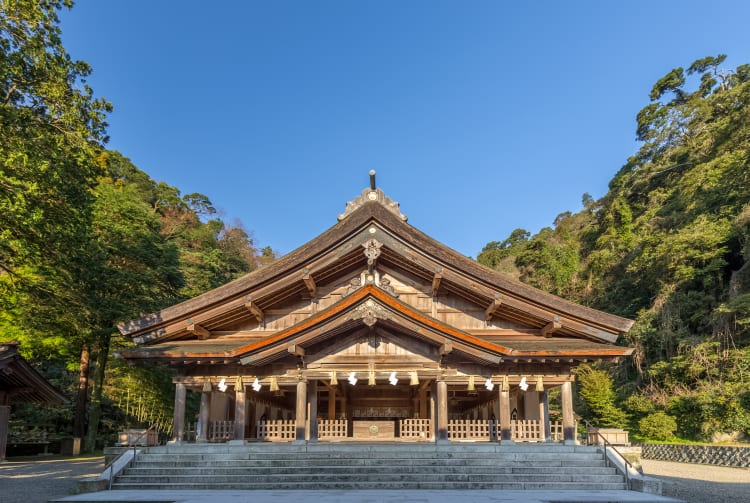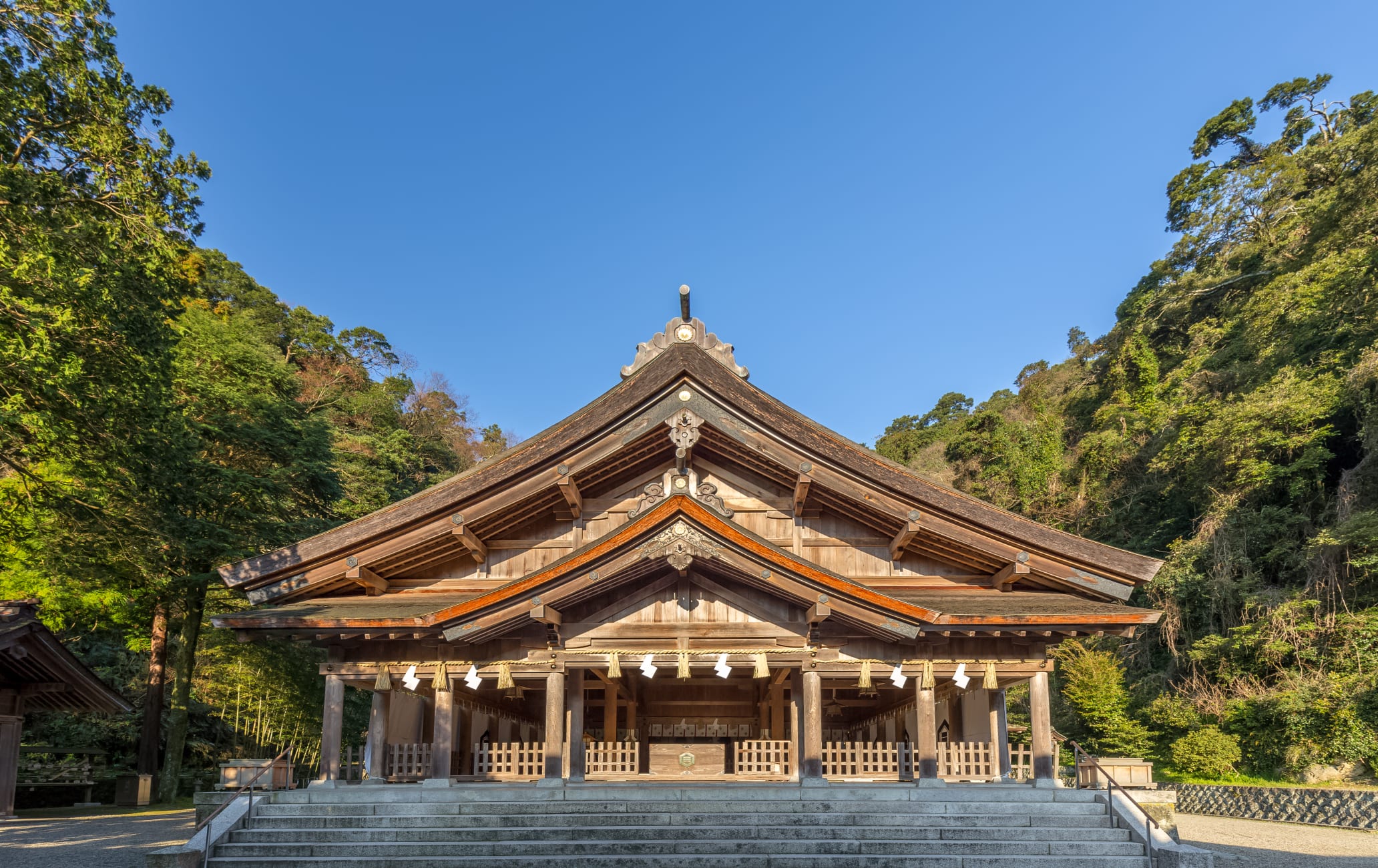An ancient shrine beloved by musicians in a sleepy, historic fishing village
More than a hundred years ago, when Lafcadio Hearn visited Mihonoseki, it was a bustling port filled with sailors drinking, gambling, and consorting with geisha and dancing girls. He described it as “one of the noisiest and merriest little havens of Western Japan.“
Now it is a sleepy fishing village, with Miho-jinja Shrine the reason most people visit, and is a special favorite of musicians. They also enjoy grilled squid or soy sauce-flavored ice cream, both local specialties.
Don't Miss
- Unique collection of musical instruments in the shrine's treasure house
- The views from Mihonoseki Lighthouse
- Soy sauce-flavored ice cream
How to Get There
You can get to the shrine by bus or car.
Take a bus from JR Matsue Station and change at the Mihonoseki Bus Terminal, from where you will arrive at the final destination, Mihonoseki, in 40 minutes.
If you come by car, you'll be able to drive along the coast road that runs in and out of the very scenic, small coves and the headlands of the peninsula's north coast.

A musical shrine
Most people coming to Mihonoseki nowadays come to visit the Miho-jinja Shrine, the head shrine of more than 3,000 Ebisu shrines nationwide. Ebisu is one of the Seven Lucky Gods of Japan, and is popular as a deity of fishing, academic achievement, and business prosperity.
Because Ebisu loved music, people have left offerings of musical instruments at the shrine. The treasure house now contains a fantastic assortment of almost 900 instruments, both Japanese and Western, some quite rare and unusual, like the first accordion in Japan.
On the seventh of every month, the treasure house opens and a selection are put on public display


Mihonoseki Lighthouse
From the nearby Mihonoseki Lighthouse, at the very tip of the peninsula, you have fantastic views out to sea and across to Mt. Daisen . Built in 1898, it is the oldest stone lighthouse in the region.


























































